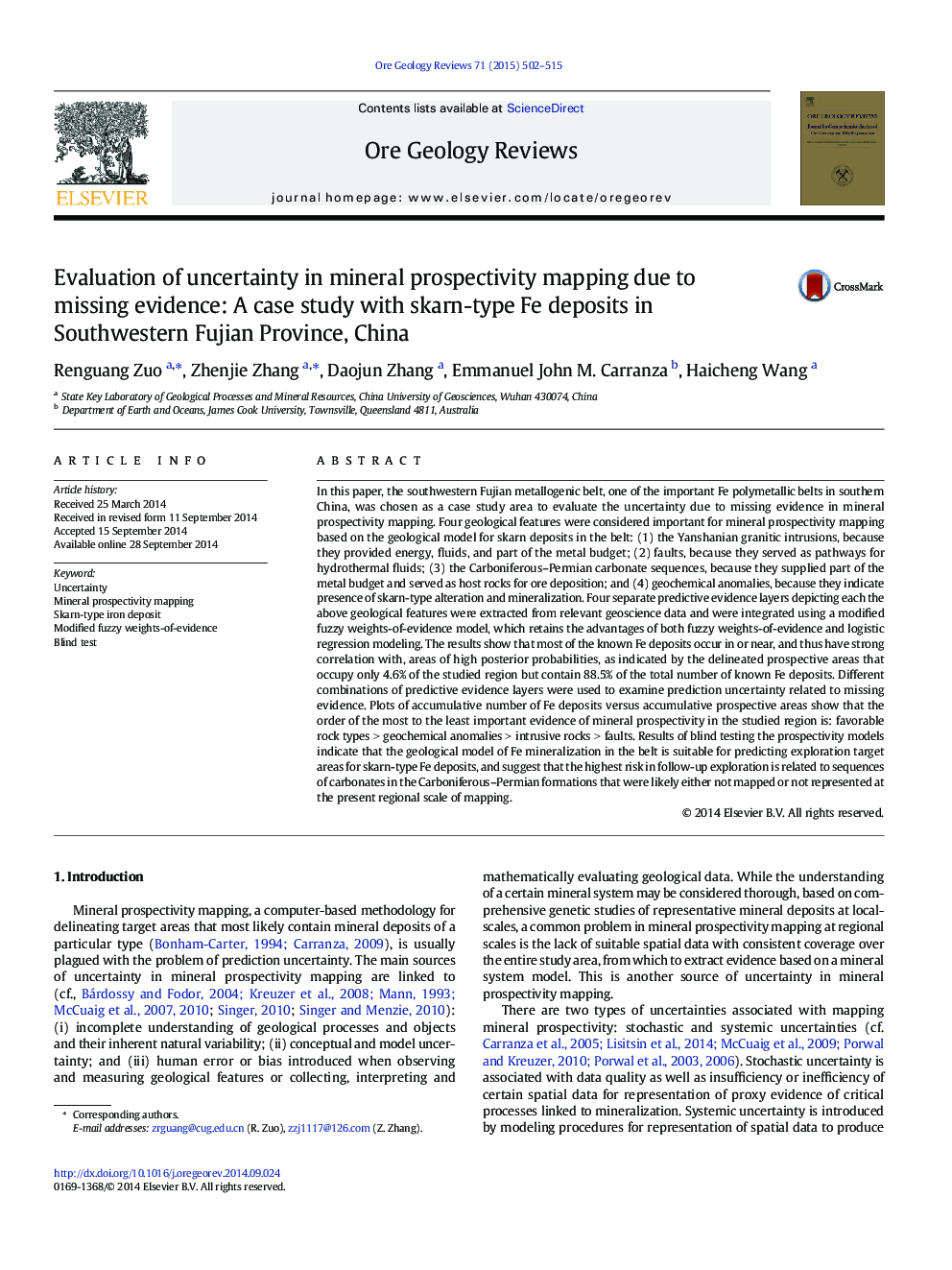| کد مقاله | کد نشریه | سال انتشار | مقاله انگلیسی | نسخه تمام متن |
|---|---|---|---|---|
| 4697035 | 1637233 | 2015 | 14 صفحه PDF | دانلود رایگان |

• The uncertainty due to missing evidence in MPM was evaluated.
• The order of significance of geological features is revealed.
• A modified fuzzy weight-of-evidence was used to integrate evidences.
In this paper, the southwestern Fujian metallogenic belt, one of the important Fe polymetallic belts in southern China, was chosen as a case study area to evaluate the uncertainty due to missing evidence in mineral prospectivity mapping. Four geological features were considered important for mineral prospectivity mapping based on the geological model for skarn deposits in the belt: (1) the Yanshanian granitic intrusions, because they provided energy, fluids, and part of the metal budget; (2) faults, because they served as pathways for hydrothermal fluids; (3) the Carboniferous–Permian carbonate sequences, because they supplied part of the metal budget and served as host rocks for ore deposition; and (4) geochemical anomalies, because they indicate presence of skarn-type alteration and mineralization. Four separate predictive evidence layers depicting each the above geological features were extracted from relevant geoscience data and were integrated using a modified fuzzy weights-of-evidence model, which retains the advantages of both fuzzy weights-of-evidence and logistic regression modeling. The results show that most of the known Fe deposits occur in or near, and thus have strong correlation with, areas of high posterior probabilities, as indicated by the delineated prospective areas that occupy only 4.6% of the studied region but contain 88.5% of the total number of known Fe deposits. Different combinations of predictive evidence layers were used to examine prediction uncertainty related to missing evidence. Plots of accumulative number of Fe deposits versus accumulative prospective areas show that the order of the most to the least important evidence of mineral prospectivity in the studied region is: favorable rock types > geochemical anomalies > intrusive rocks > faults. Results of blind testing the prospectivity models indicate that the geological model of Fe mineralization in the belt is suitable for predicting exploration target areas for skarn-type Fe deposits, and suggest that the highest risk in follow-up exploration is related to sequences of carbonates in the Carboniferous–Permian formations that were likely either not mapped or not represented at the present regional scale of mapping.
Journal: Ore Geology Reviews - Volume 71, December 2015, Pages 502–515